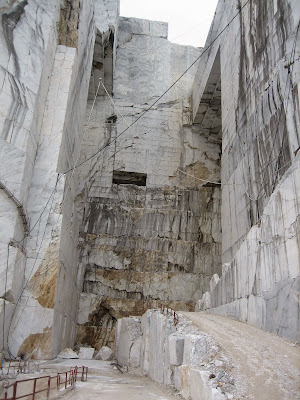inspiration for an exploratory path I've been toying with for some time. The forms offered by the landscape have inspired me since way back, from well before my time studying abstract form with other like-minded artists at a local studio where it all began to come together (working in clay and then casting in bronze or resin), to my stone carving days back in Italy right through to the present day, in my everyday surroundings, the garden and forest in particular.
Moss now a particular fascination, as the images of, let's call it an 'installation' although that's too formal a word for it, in my garden illustrate. This fascination also indulged and nurtured with my trip to Tokyo two years ago:
Not that I'm planning to simulate the detail of the moss - that goes against everything I feel and I do in sculpture. It's the forms, the shapes, that the moss covering creates over its substrate, be it wood or stone, that fascinates and inspires.
I've been thinking about combining clay with some of the raw marble stones I brought back from my time in Seravezza (near Pietrasanta and in the same region as Carrara, in Italy) back in 2008. I no longer wish to carve those stones in the way I have done in the past (see the 'Stone and Bronze' page on my website: Stone&Bronze ) because my focus now is on letting the material speak (as per my 2012 website entry on 2012-2015 and explained in previous blog posts of 21 and 24 August 2012 related to Gutai). Marble and the raw stones themselves are beautiful in their own right; I want to keep my intervention to a minimum simply to draw attention to their inherent, i.e. already there, beauty.
These are some of the stones:
which became Pietra Santa (as per the webpage mentioned above)
me at the back carrying another stone, from the same river as the 'Pietra Santa' stone above. The stones have worked their way down from the marble quarry up above over the years and are the water-eroded fragments from the blastings at the quarry. I took away several others (less large and therefore much easier to carry back to the car!).
still in the process of becoming Pietra Santa
the marble quarry from where some of my other stones came
A similar effect from snow:
(All pasted from Google Images)



























